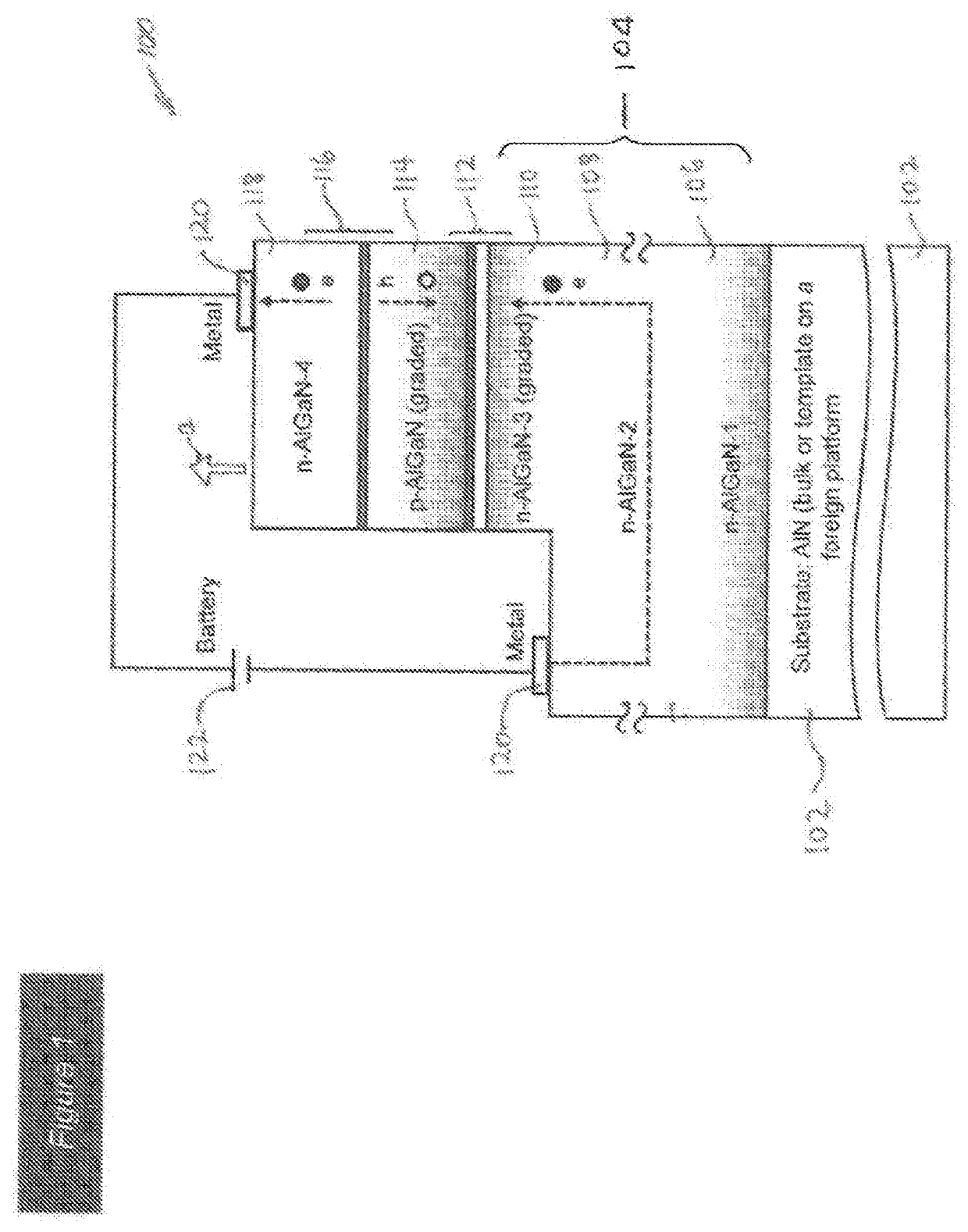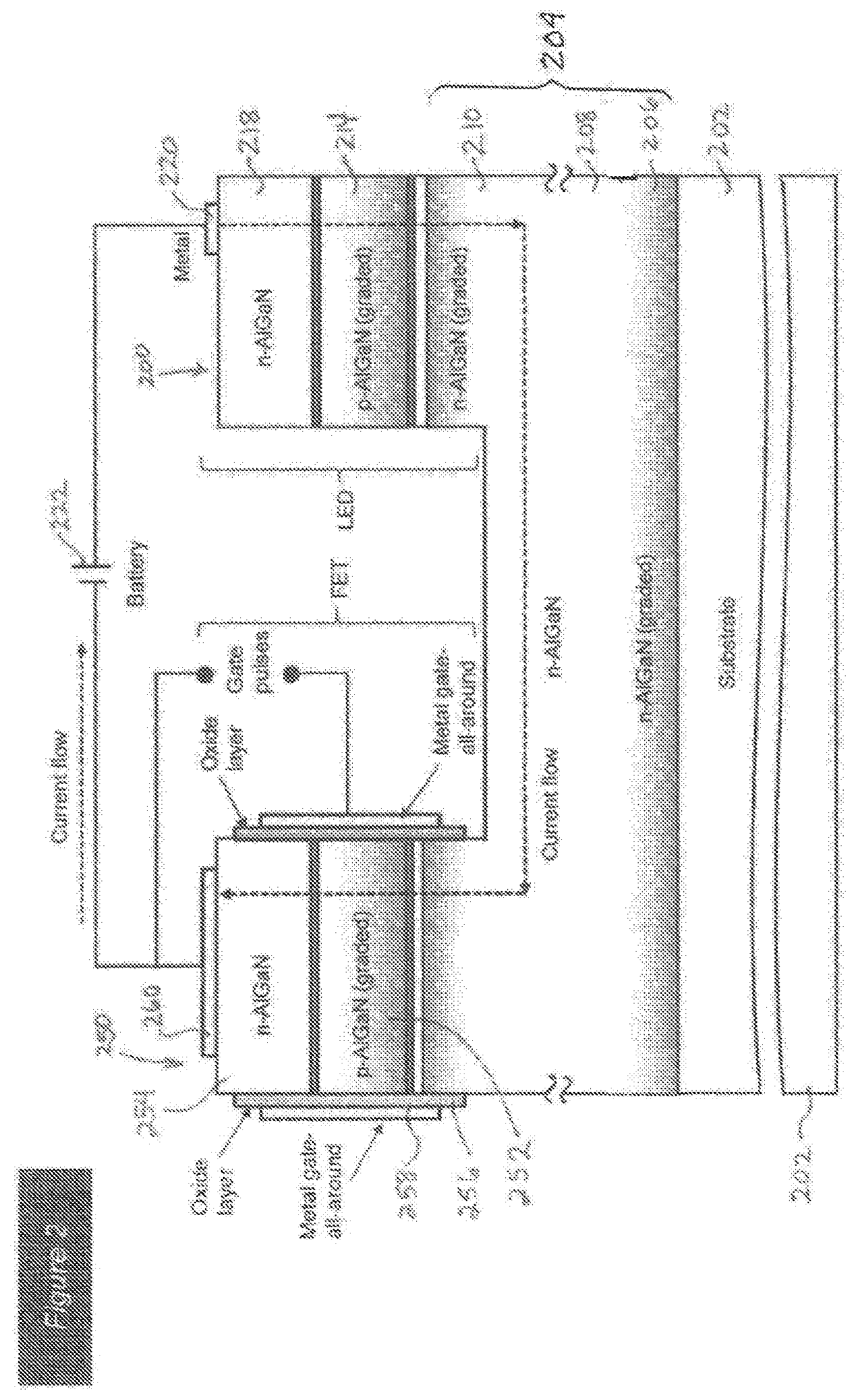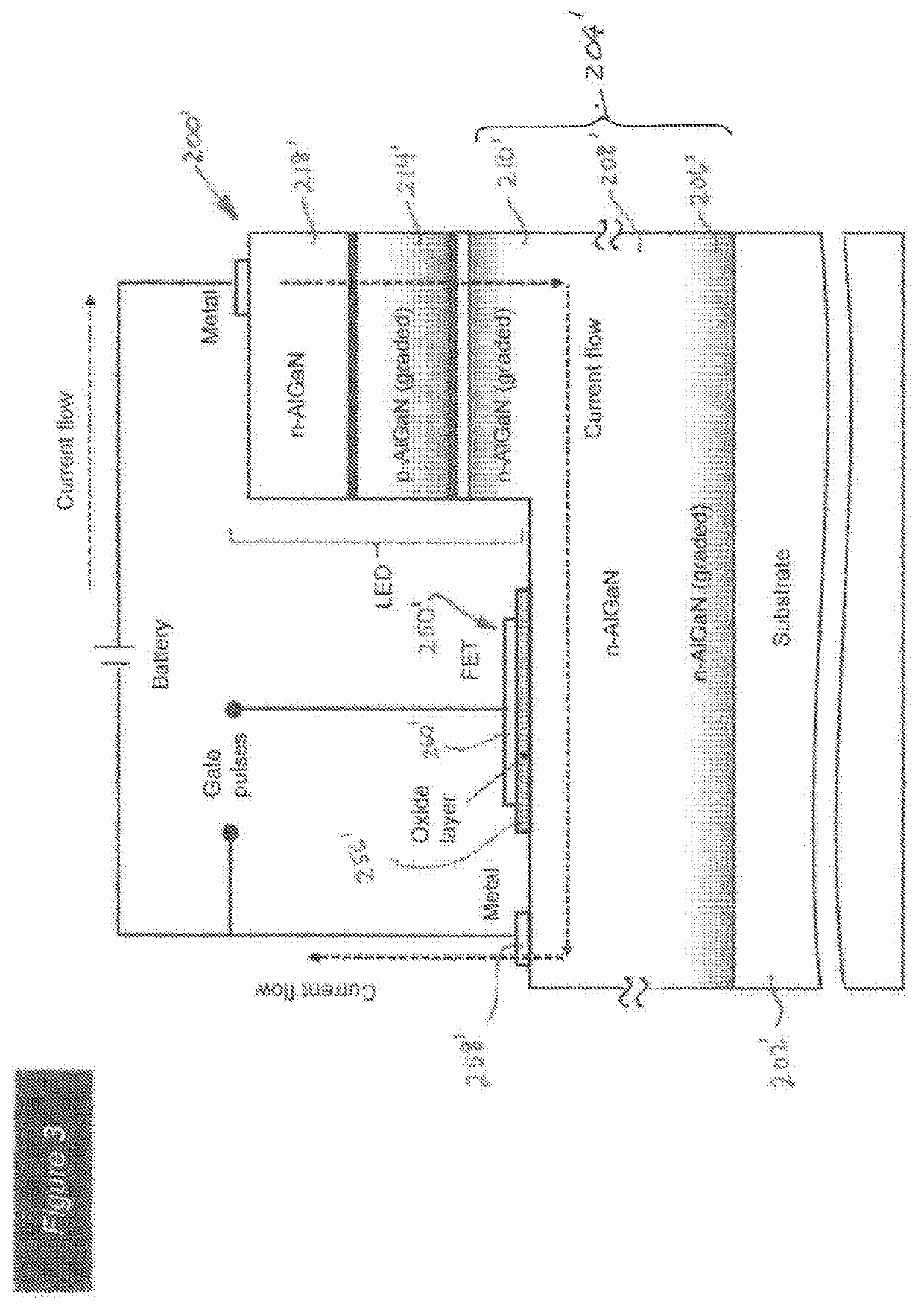Polarization field assisted heterostructure design for efficient deep ultra-violet light emitting diodes
a light-emitting diode and heterostructure technology, applied in the direction of basic electric elements, electrical equipment, semiconductor devices, etc., can solve the problems of low external quantum efficiency (eqe), poor doping efficiency, limited light extraction efficiency, etc., to minimize resistive losses and heat generation, reduce sheet resistance, and improve the effect of light extraction efficiency
- Summary
- Abstract
- Description
- Claims
- Application Information
AI Technical Summary
Benefits of technology
Problems solved by technology
Method used
Image
Examples
Embodiment Construction
[0014]The subject technology overcomes many of the prior art problems associated with DUV LEDs. The advantages, and other features of the technology disclosed herein, will become more readily apparent to those having ordinary skill in the art from the following detailed description of certain preferred embodiments taken in conjunction with the drawings which set forth representative embodiments of the present technology and wherein like reference numerals identify similar structural elements. Directional indications such as upward, downward, right, left, bottom, top and the like are used with respect to the figures and not meant in a limiting manner.
[0015]In brief overview, the subject technology realizes deep UV LEDs (DUV-LEDs) with design and crystal growth methods using molecular beam epitaxy (MBE). For example, the DUV-LED consists of a n-doped injection region, a p-doped injection region with polarization field-assisted doping with ternary AlGaN (Aluminum-Gallium-Nitride) wide ...
PUM
| Property | Measurement | Unit |
|---|---|---|
| thickness | aaaaa | aaaaa |
| thickness | aaaaa | aaaaa |
| thickness | aaaaa | aaaaa |
Abstract
Description
Claims
Application Information
 Login to View More
Login to View More - R&D
- Intellectual Property
- Life Sciences
- Materials
- Tech Scout
- Unparalleled Data Quality
- Higher Quality Content
- 60% Fewer Hallucinations
Browse by: Latest US Patents, China's latest patents, Technical Efficacy Thesaurus, Application Domain, Technology Topic, Popular Technical Reports.
© 2025 PatSnap. All rights reserved.Legal|Privacy policy|Modern Slavery Act Transparency Statement|Sitemap|About US| Contact US: help@patsnap.com



